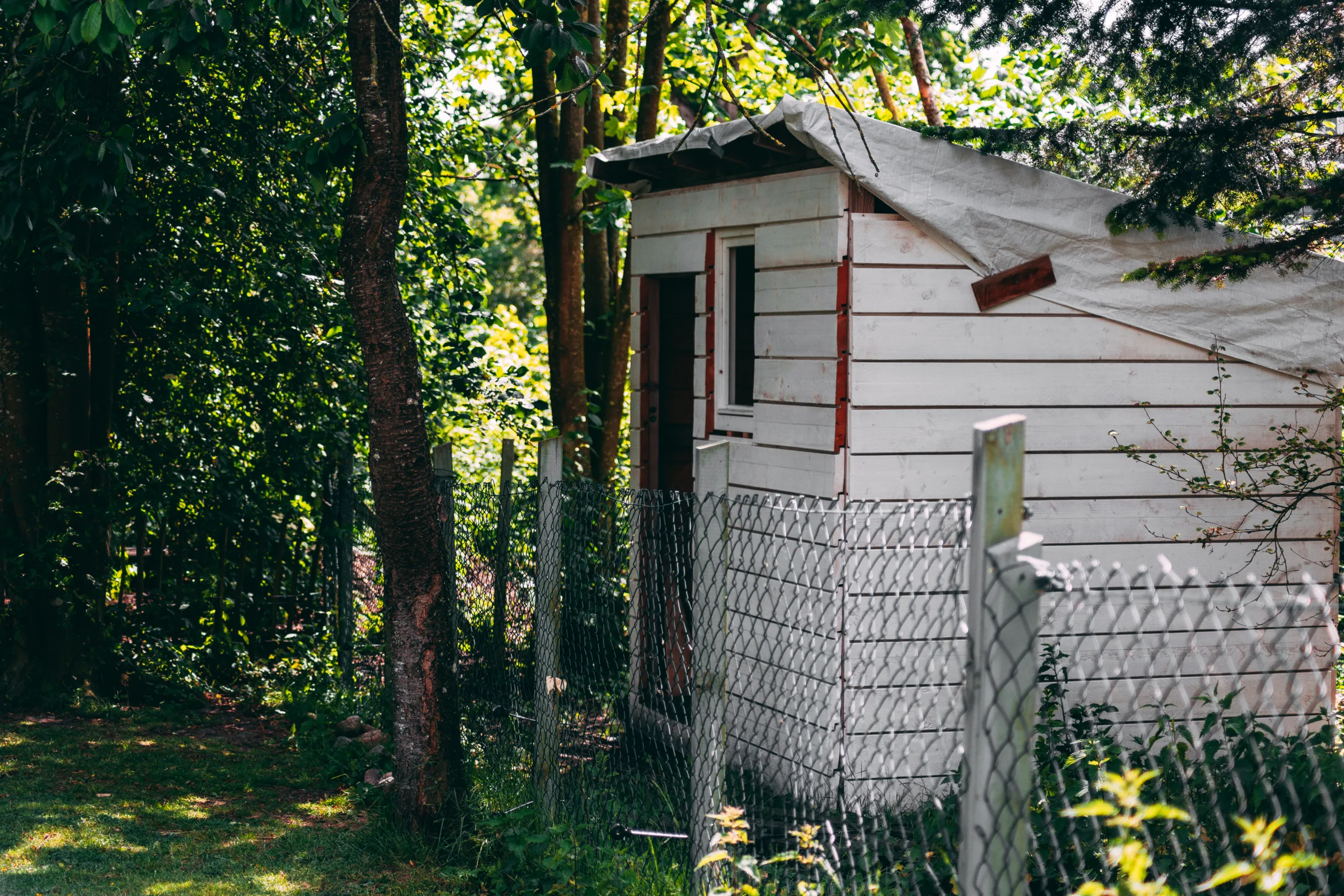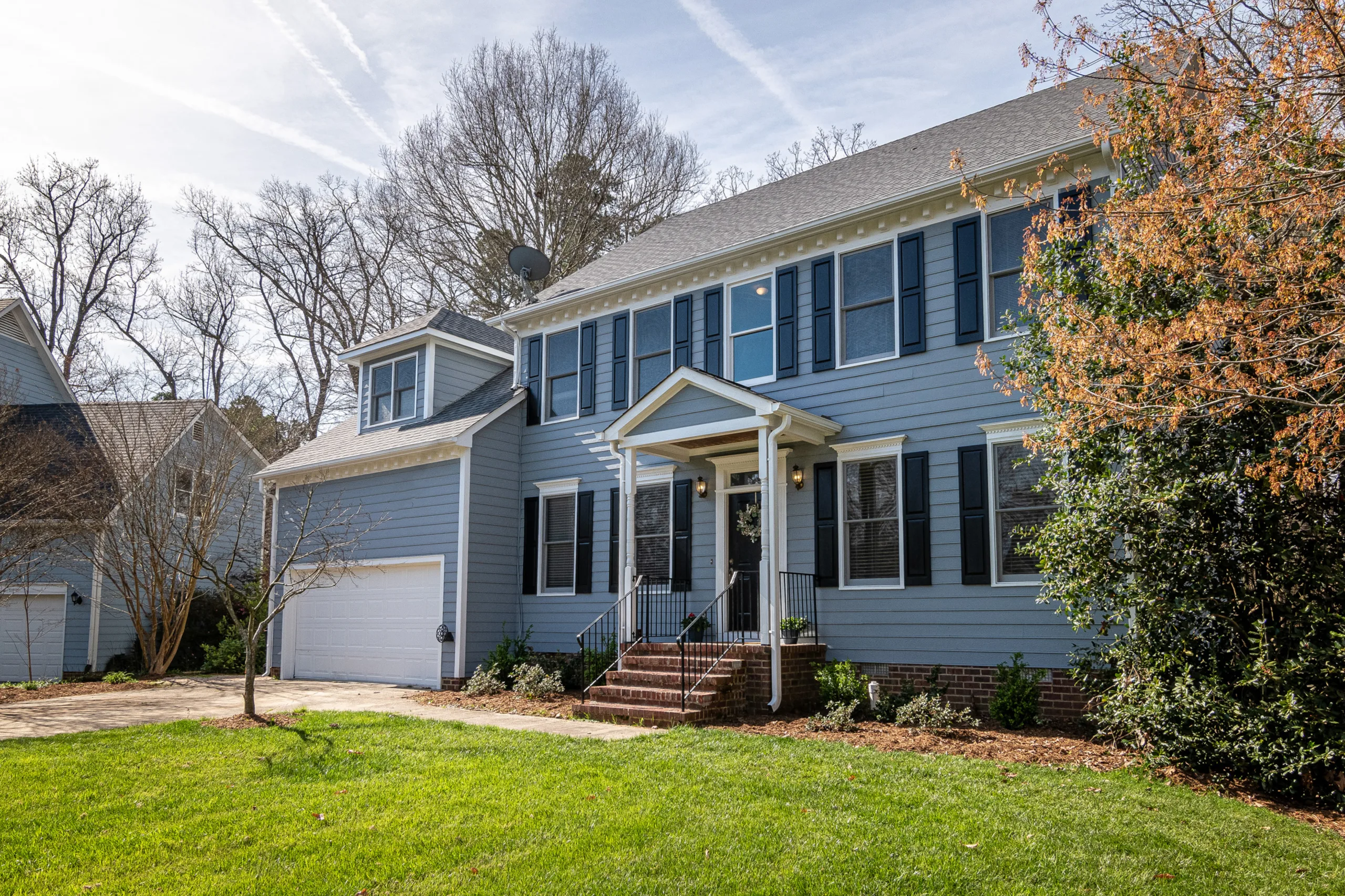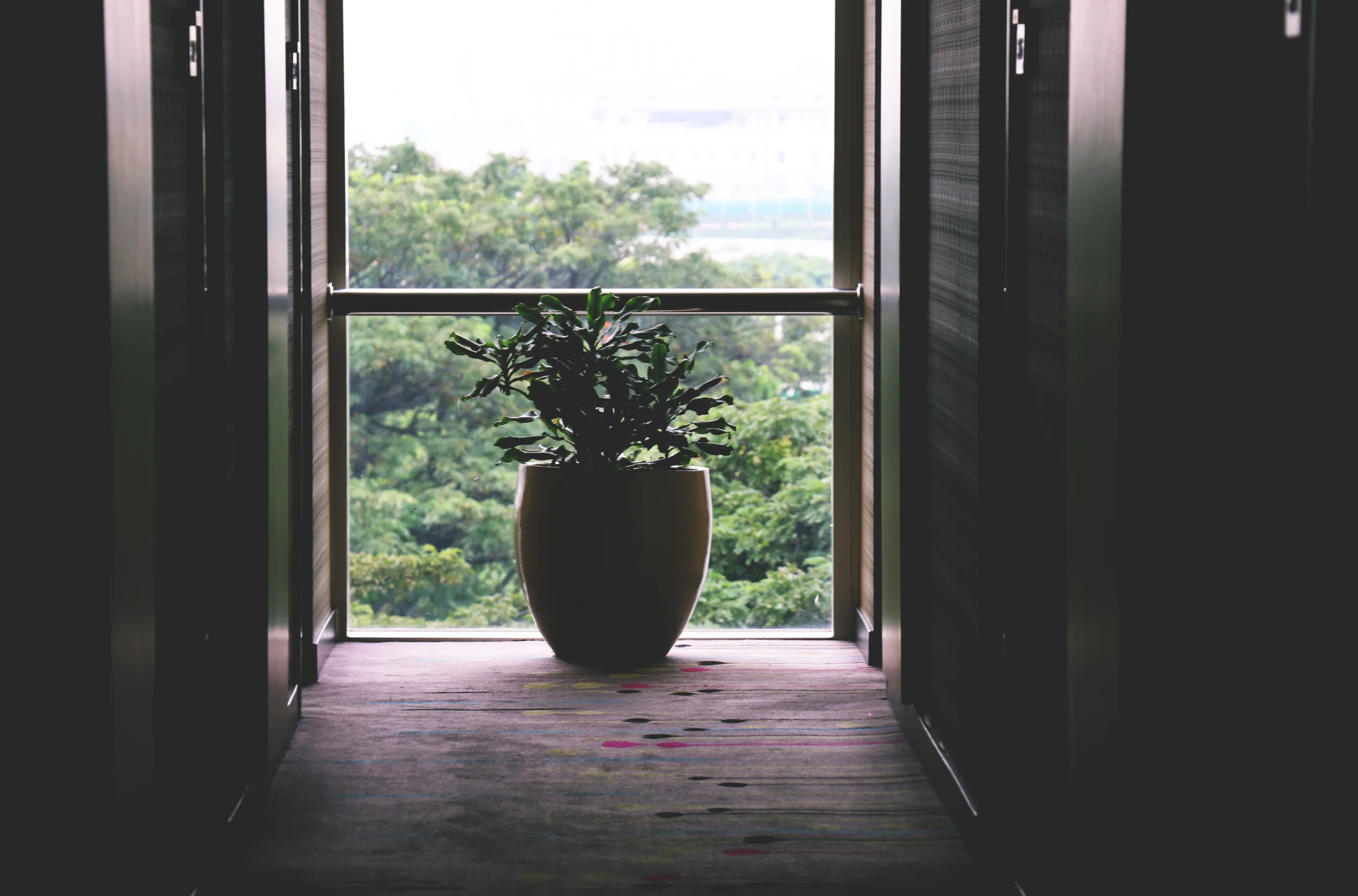Are you looking for the perfect tree to plant near your house? Trees can add beauty and value to your home, as well as provide shade, privacy, and protection from the elements. But not all trees are suitable for planting near a house. In this article, we’ll discuss what makes a good tree to plant near a house—including size, shape, and species—and provide some great options to choose from. Whether you’re looking for a small tree that won’t get too big or a tall one that will offer plenty of shade, you’ll find something that fits your needs here.
The best trees to plant near a house are those that are low-maintenance and won’t cause any damage to the property. Some great examples include: Japanese maple, dogwood, cherry blossom, crape myrtle, birch, and magnolia trees. These trees have a variety of benefits such as providing shade, year-round beauty, and they can also help reduce energy costs. Planting any of these trees near your home will not only add aesthetic value but will also provide practical benefits.
Low Maintenance Trees
If you’re looking for a tree that requires minimal care, it can be confusing to choose the right one. There are many types of trees that can be low maintenance and are suitable for various climates and regions of the world. From evergreen to deciduous trees, there are plenty of options to choose from when selecting a tree for your landscape. Here is a list of some of the most popular low-maintenance trees that require little upkeep and attention:
1. Japanese Maple: This beautiful small tree is perfect for a small garden or yard. It’s relatively easy to care for, as long as it’s planted in well-draining soil and kept away from strong winds. While it does require some water during dry periods, it generally doesn’t need much care after it has been planted.
2. Crape Myrtle: A great choice if you’re looking for an attractive flowering tree, Crape Myrtles are easy to maintain and come in a variety of sizes and colors. They prefer full sun and don’t require pruning unless you want to shape them into a specific form.
3. Silver Maple: Silver Maples are fast-growing deciduous trees with striking silver foliage. They prefer moist soil but can tolerate some drought conditions as well as flooding in wet periods. While they do need some pruning if you want them to reach their full potential, they generally require very little care once established in the landscape.
4. Chinese Pistache: Chinese Pistache is an attractive evergreen tree that tolerates both hot summers and cold winters well. It prefers full sun but can tolerate some shade as well, making it ideal for many different climates and regions of the world. It doesn’t require much pruning or maintenance beyond watering during dry periods and occasional fertilizing in spring or fall months.
5. Redbud Tree: Redbud Trees are known for their vibrant purple blossoms in early springtime, which make them an excellent choice if you’re looking for an ornamental tree with seasonal color changes throughout the year. They thrive in full sun but can tolerate partial shade as well, making them relatively easy to care for once established in your landscape or garden area.
Overall, there are many trees that require minimal upkeep and attention when planted in the right location with proper soil drainage and sunlight exposure levels taken into consideration beforehand. Whether you’re looking for a flowering ornamental tree or something more traditional like an evergreen or deciduous variety, there’s sure to be something out there that fits your needs perfectly!
Evergreen Trees for Near a House
When it comes to choosing trees for near a house, evergreen trees are the ideal option. Not only do they provide shade and beauty all year round, but many species are also relatively low maintenance and can tolerate being planted close to a home. There are a variety of evergreen trees suitable for planting near a house, depending on your landscape needs.
For those looking for an ornamental tree with year-round color, the Japanese red pine is an excellent choice. This tree has bright green needles that turn bronze in winter and produces long cones that add visual interest when they fall in late summer or early fall. The Japanese red pine can tolerate full sun or partial shade and grows best in slightly acidic soil with good drainage. It’s also low maintenance and can reach up to 40 feet in height.
The yew is another great evergreen tree for planting near a house. It’s a slow-growing conifer with flat needles that stay green throughout the year. The yew can grow up to 30 feet tall and prefers full sun to partial shade and moist, well-drained soil. It’s also relatively drought tolerant once established and requires minimal pruning or maintenance once it’s planted.
The Leyland cypress is another popular evergreen tree for near a house due to its fast growth rate and elegant needle-like foliage that stays green year-round. It’s also low maintenance and grows best in full sun with moist, well-drained soil. The Leyland cypress can grow up to 60 feet tall and requires little pruning or maintenance beyond occasional trimming of dead or damaged branches.
For those looking for an evergreen option that adds texture and interest to their landscape, the arborvitae is an excellent choice. This tree has soft needles that turn bronze in winter, adding visual interest all year long. It prefers full sun but will tolerate some shade and grows best in moist soils with good drainage. It’s also low maintenance once established and can reach up to 35 feet high when mature.
No matter which evergreen tree you choose for near your house, it’s important to research the species before planting to make sure it’s suitable for your climate zone as well as your soil type and light requirements. With proper care, these trees will provide beauty, shade, privacy—and peace of mind—for years to come!
Shade Trees for Near a House
Adding shade trees to a residential landscape can be an attractive and practical way to reduce air temperatures and provide other benefits. Shade trees can provide both visual interest and protection from the sun, making outdoor living areas more comfortable. There are many types of shade trees suitable for planting near a house, but it is important to choose species that are adapted to the local climate and soil conditions.
The most common shade trees for residential properties are deciduous trees, which lose their leaves in winter. Examples of deciduous shade trees include maples, oaks, elms, ashes, lindens, and birches. These trees can provide dense shade in summer and allow sunlight to reach the house in winter when their leaves have fallen off.
Evergreen varieties such as pines, cedars, spruces and firs are also suitable for providing year-round shade. While they may not grow as large as deciduous varieties, evergreen varieties allow light to filter through their branches even when at full size.
When selecting a tree for planting near a house it is important to consider its mature size in relation to the house and surrounding landscape. A tree that is too large may cause problems with roots or branches interfering with structures or other plants. Additionally some species may be prone to pest infestations or diseases that could cause damage or require additional maintenance costs.
Before planting any tree near a house it is important to research its needs carefully and select one that is appropriate for the location. With proper care these trees can be an attractive addition to any landscape for many years to come.
Flowering Trees for Near a House
When it comes to landscaping near a house, flowering trees can be an excellent choice. Not only do they provide color and beauty to the area, but they also provide shade and help to block out noise from nearby traffic or other sources. There are many types of flowering trees available, so it is important to consider factors such as size, hardiness, and climate when selecting the right one for your space. Here are some of the top flowering trees for near a house:
Crape Myrtle: Crape myrtles are known for their spectacular show of flowers in late summer and fall. They come in a variety of colors ranging from white to pink to purple, and have attractive foliage as well. They can reach heights of up to 25 feet, making them ideal for larger yards or areas where there is plenty of space.
Japanese Flowering Cherry: This tree is well-known for its stunning springtime blooms that come in shades of white, pink, and red. It is relatively small compared to other trees, growing up to 20 feet tall at most. It does best in full sun and is fairly hardy in most climates.
Magnolia: Magnolias have large fragrant flowers that bloom in white or pink during the springtime. This type of tree grows slowly and can reach heights up to 90 feet tall with proper care. It prefers moist soil conditions and full sun exposure but can be adapted to other climates as well.
Dogwood: Dogwoods are popular with landscapers due to their bright white or pink flowers that bloom during the springtime months. They grow moderately fast reaching heights around 20-30 feet tall when mature. Dogwoods prefer cooler temperatures during the winter months so they may not do as well in warmer climates.
Flowering trees can make a great addition to any yard or landscape near a house because they add color, beauty, and privacy while also providing shade on hot days. Be sure to choose one that fits your needs based on size, hardiness, and climate preferences so you can enjoy it for years to come!

Fruit Bearing Trees for Near a House
Choosing the right fruit bearing tree to plant near your house can be a challenge. There are many types of trees that can produce fruit, but some may not be suitable for your particular climate or soil conditions. It is important to consider the size, shape, and type of tree that will produce the best yield in your area. Some of the most popular and successful fruit bearing trees for near a house include apples, oranges, pears, peaches, and plums.
Apples are an excellent choice for a backyard fruit tree. They come in many varieties and are easy to care for with minimal maintenance. Apples require full sun and well-drained soil to produce an abundant harvest. You should also make sure that you provide adequate space between each tree so they can receive enough air circulation and light exposure.
Oranges are another ideal choice for planting near a house as they require very little maintenance. They come in several sizes and types so you can choose one that fits your needs best. Oranges need plenty of sun exposure and should be planted in well-drained soil for optimal growth. Additionally, oranges prefer slightly acidic soil with a pH between 6-7 to thrive.
Pears are another great option for adding color and flavor to your yard. They come in many varieties from Asian pears to European pears and Bartlett pears so you can pick whatever type you prefer. Pears need plenty of sunlight and fertile soil with excellent drainage in order to thrive. Additionally, these trees need regular pruning in order to produce an abundant harvest year after year.
Peaches can often produce more than one crop per season when provided with optimal growing conditions such as full sun exposure, well-drained soil, and regular watering schedule during fruiting season. Peaches also need pruning throughout their life cycle to ensure healthy growth and abundant harvests each year.
Plums are an excellent addition to any landscape as they provide beautiful foliage along with juicy fruits during harvest time each year. Plums prefer full sun exposure with slightly acidic soil (pH 6-6.5) that has good drainage capabilities so it is important to choose a variety that is suited for your area’s growing conditions before planting them near your home. Additionally, these trees need regular pruning throughout their life cycle in order to maintain their shape and promote healthy growth.
When selecting fruit bearing trees near your house it is important to choose varieties that will thrive in your particular climate or soil conditions as well as ones that fit within the available space of the area where they will be planted. Ultimately, carefully choosing the right variety will ensure years of plentiful harvests from your backyard orchard!
Drought Tolerant Trees for Near a House
When selecting trees for near a house, drought tolerant trees should be taken into consideration. These trees are able to withstand long periods without water and can still remain healthy and vibrant. Drought tolerant trees require less water than other varieties, making them ideal for areas that are prone to dry periods. They are also more resistant to disease and pest problems, making them easier to maintain.
Some of the most popular drought tolerant tree varieties include the red maple, silver maple, American beech, white oak, redbud, and American sweetgum. These trees tolerate both hot and dry climates, as well as cold winters. They prefer well-drained soil that is slightly acidic or neutral in pH level. Additionally, they require minimal pruning and fertilization once established.
When planting these trees near a house it is important to consider their mature size so they do not interfere with power lines or create too much shade on the house itself. For example, an American beech is a great option as it grows between 40-60 feet tall while a white oak may reach heights of up to 80 feet which could cause issues if planted too close to the house.
In addition to being drought tolerant, these trees provide many benefits such as providing shade and creating aesthetic beauty around the home. They also provide wildlife habitat for many birds and insects as well as create barriers from wind which can help reduce energy costs during the winter months.
Overall, selecting drought tolerant trees for near a house not only requires less maintenance but also adds beauty and value to any property while providing environmental benefits such as reducing energy costs and providing wildlife habitat.
Ornamental Trees for Near a House
When selecting ornamental trees for near a house, there are several factors to consider. First, it is important to consider the size of the tree when fully grown. While the smaller varieties can be a great addition to any landscape, larger trees can cause potential problems. Additionally, consider the crown or canopy shape of the tree; certain varieties may need to be pruned regularly in order to keep them from growing too close to the house and causing damage.
The type of soil in which the ornamental tree will be planted is also important. Certain types of soil may require additional nutrients or treatments in order for the tree to thrive. Additionally, it is important to research any local ordinances regarding planting trees near homes; some municipalities have restrictions on what kinds of trees can be planted in residential areas.
Another factor to consider when selecting an ornamental tree for near a house is its resistance to pests and diseases. Some species are more susceptible than others and may require regular treatments in order to keep them healthy and thriving. Additionally, some species grow quickly and may need more frequent pruning or trimming than others.
Finally, it’s important to select an ornamental tree that will provide year-round interest in the landscape. Consider trees that offer colorful foliage in autumn, fragrant blooms during springtime or even edible fruits or nuts during certain seasons. By carefully considering all of these factors before selecting an ornamental tree for near a house, homeowners can ensure they choose one that will bring beauty and interest for years to come.

Conclusion
When selecting trees to plant near a house, it is important to consider the tree’s size, growth rate, and maintenance requirements. Some good trees to plant near a house include deciduous trees such as maple, oak and cherry; conifers such as pine and spruce; and ornamental trees such as flowering crabapple, magnolia and dogwood. Each of these trees provides attractive foliage and unique characteristics that can enhance the landscape. It is important to research each tree before planting in order to ensure that it is suitable for the climate, soil type and space available. With proper care and maintenance, these trees can provide beauty, shade and privacy for many years.
When planting a tree near a house, it is important to remember that some trees require more care than others. Trees with shallow roots or large branches should be planted further away from the house. Trees should also be planted at least 10 feet away from power lines or buildings in order to prevent damage or injury. With careful consideration of these factors, any homeowner can find the perfect tree for their home environment.
Mark Hoffman is a dedicated arborist and tree care specialist with over a decade of experience. His love for trees began when he visited Yosemite National Park as a teenager and was awestruck by the giant sequoias. Mark pursued his passion by studying forestry at Michigan Technological University, where he earned a Bachelor of Science degree.
Since then, he has worked tirelessly in the field of arboriculture, helping to preserve and protect trees in his community. His expertise and dedication have made him a respected leader in the industry and a valuable resource for anyone seeking advice on tree care.
